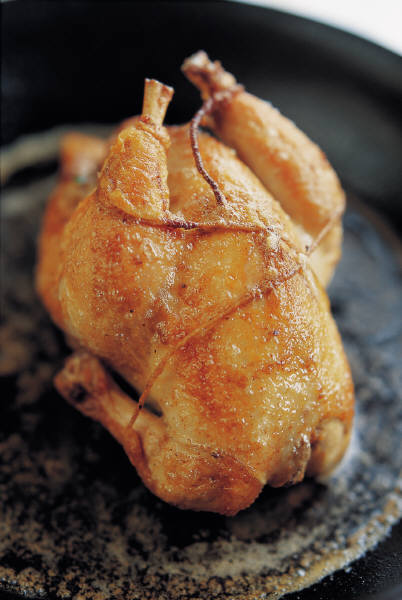Balanced Living
The Economy of a Chicken
Posted by Arja on September 10 in Main Dishes
There’s no doubt about it. Cooking with fresh food takes a little more time than packaged, convenience foods. If you’re trying to reinvent the wheel with each meal, then you’re probably spending more time in your kitchen then you really want to be. If you plan ahead, and by this I mean with menu planning and shopping lists, you can cook in larger batches and take elements from a meal made earlier in the week and use them in meals later on. My dear friend, Dawn Nita, is a trained chef and today we’re lucky enough to have her share a post about how she does this in her own home.
Dawn is a graduate of Humber College’s Culinary Management Program. Her first job out of school was at Bymark in Toronto’s financial district. She joined Jamie Kennedy Kitchens in 2008 as a pastry cook at Jamie Kennedy Wine Bar, and quickly moved up the ranks to Pastry Chef. She is currently in charge of chocolate production at SOMA chocolatemaker.
The days have started getting shorter, the mornings are a bit cooler and soon our cooking habits will move indoors.
When the weather starts getting cooler, I start thinking about my oven. I remember as a child that Sunday nights were when my parents entertained their friends. Dinner usually consisted of roasted chicken or prime rib roasts. I think this idea of Sunday roasts has stayed with me because I love the ease that they are to prepare while appearing posh when presented to guests.
But a roast chicken also holds the possibility of feeding yourself over the course of a week. My husband travels often for business and I have found a way to creatively feed myself as a singleton with one bird. An organic chicken (2.5 kg) costs about $23.
On Sunday night I roast the chicken (more on that later) along with some root vegetables to celebrate our last night together. I usually eat a breast while the husband enjoys a leg.
With the help of some lettuce and feta, I enjoy a Cobb salad for lunch everyday until all of the breast meat is gone. The remainder of the dark meat is used to make this curry recipe. And once all of the meat is removed from the carcass, I simmer it for an hour along with some aromatics to make a stock. Once the stock is strained, I add some small diced carrots and celery, along with some noodles or rice to make soup (and also as the stock in the curry recipe). I have also used the chicken meat to make a pot pie when I had extra dough in the freezer—strain the liquid from the bottom of the roasting pan and use it for the roux—save the vegetables as the base of your next soup.

Roasting a chicken is super easy. Preheat the oven to 400F. Chop a medium onion, two celery stalks and a small carrot, and place them on the bottom of the roasting pan (the ratio should be two parts onion to one part each carrot and celery). Add ten peppercorns, a bay leaf and three cloves of garlic. If you have parsley or thyme stems, add them as well. Rub both sides of the chicken with oil and liberally salt and pepper the meat. Cut a slit into the extra skin on each side at the rear of the chicken. Tuck the wing tips into the sides of the chicken and then put one leg through the slit on the opposite side and repeat with the other leg—trussing the chicken without using string. Cook the chicken for an hour, breast side down. Turn the chicken over and cook until the internal temperature is 82C / 180F, placing the thermometer into the thickest part of the leg, as well as the breast—avoid touching the bone (my 2.5 kg bird took a total of 2 hours to cook). Allow the chicken to rest for a few minutes and then get out your carving knife.
Dawn is an ardent supporter of slow food and applies its ethos on every tier, professionally and otherwise. Her blog, like her sugary innovations, is a slice of heaven: Dawnabelle’s



